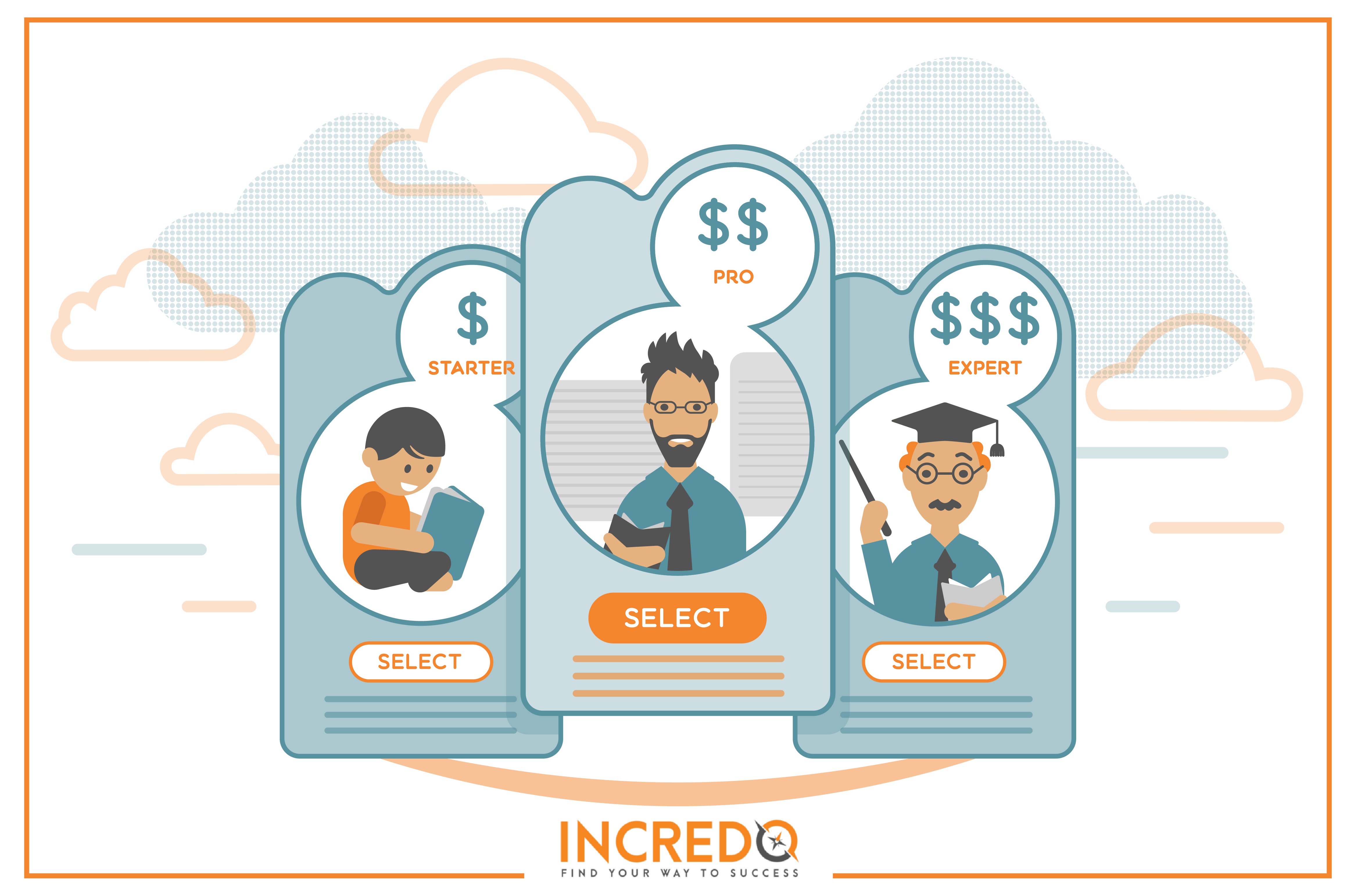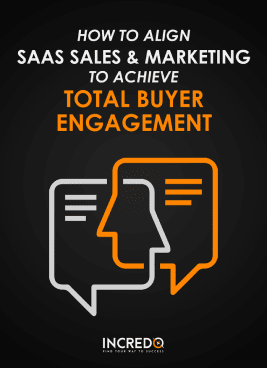With such numbers, the SaaS industry has no signs of slowing down, and it has already become a very attractive space for startups. However, getting into SaaS with creative ideas is one thing, but being successful with it is a beast of its own. There are hundreds of articles focused on the development of successful SaaS companies, but the focus of our article today will be on the SaaS pricing models. Before getting into the successful SaaS pricing strategies, some background needs to be covered. According to Lincoln Murphy, pricing models are not about the pricing page you use. In order to be successful, companies need to give serious consideration to market position, service level and customer satisfaction. Here are some important factors you need to consider:
Before getting into the successful SaaS pricing strategies, some background needs to be covered. According to Lincoln Murphy, pricing models are not about the pricing page you use. In order to be successful, companies need to give serious consideration to market position, service level and customer satisfaction. Here are some important factors you need to consider:
- Where will you position yourself in the market?
- Who is your target audience?
- Do you serve businesses (B2B), direct customers (B2C) or both?
- How many customers do you desire/will be able to serve?
- What are the main benefits your customers will get?
- How long is your customer lifespan?
Thinking about these questions will give you the chance to clearly understand the value of your SaaS. That, in its turn, will make it easier for you to think about pricing tiers and bundles. SaaS subscription pricing models (on a monthly or annual basis) are the most popular ones in this industry. And this popularity is maybe the biggest thing SaaS businesses have in common. But if we go deeper, we will discover more and more differences and details. Now, here we present the most successful pricing models for SaaS. You will also find real-life SaaS pricing examples and learn everything necessary about software as a service pricing mistakes.
1. Per User Pricing
This is one of the popular SaaS pricing models, where you have users pay different amounts based on the number of individuals using the software. However, according to Patrick Campbell from Price Intelligently, this common pricing model may hurt some SaaS companies, especially if you are working with client companies where there may be multiple individual users. The reason is that when you implement per user pricing, you are cutting down on the number of people within a company who will use and love your software. Moreover, such a pricing model limits the potential number of users, which is not good for the health of your SaaS company’s profits. Sometimes, this pricing model can work for SaaS companies, but in many cases you need to implement a value-based approach. In the pricing models of SaaS companies, the number of users usually is not the only factor that differentiates free and paid plans. For example, in case of Pure Chat, a live chat software, the Free plan is limited to 3 users/operators, while the Growth plan is available for 4 and the Pro plan for 10 users.
2. Tiered User Pricing
The mechanism of this strategy is somewhat related to per user pricing. In the case of tiered user pricing, the number of permitted users increases in bands rather than single digits. For example, a SaaS product may cost one price for up to 5 users, another price for up to 10 users and so on. Bitrix 24 who provides tools for communications, tasks and projects and CRM, offers 4 pricing plans where user limit is different for different pricing strategies. In the CRM + plan the maximum number of users is 6, in the standard plan 50 and in the professional plan unlimited. Besides the main disadvantages mentioned in the per user pricing model, tiered user pricing also has several potential drawbacks. For example, this model does not represent value for clients like solopreneurs, who may only need base features but not additional features. If you are offering tiers, make sure to think about the number of options you offer and the method in which you display them, as this can affect your revenue.
3. Flat Rate Pricing
A flat rate pricing model is when a company charges a single fixed fee for the software (or single fee regardless of target group). For example, SDL Trados Studio is a translation software that offers 3 studios and you can buy any of them with a single payment. The first plan is for freelance translators who will be able to translate, review, use terminology, and machine translation. The second plan is for translators with two PCs (allows extra activation license) and the third plan is designed for global teams (allows to share a license with multiple users in several locations). The main disadvantage of this approach is that you simply can’t retain your users (they get what they want with a single transaction) and every time you need to acquire more and more new customers (acquisition is always more expensive than retention). While in case of monthly or annual subscription models, you can develop an attractive retention strategy and make them pay for a long time on a regular basis. On the other hand, you can price your software considering how much a single customer would stay with you and how much his Customer Lifetime Value (CLV) would approximately be. Another approach can be found on Basecamp’s pricing page. It is project management and team communication software. With just $99 per month, you get unlimited users and projects, all Basecamp features and 500 GB of file storage. $99 is their only pricing plan.
4. “Pay as You Go”
In the “Pay as You Go” SaaS pricing model, the customers are charged based on their usage of the service. A prime example of this pricing model is Amazon Cloud Server. The advantage of this model is that, for example, small companies (or companies with fluctuating service usage) won’t need to pay huge amounts of money if they are using only several features. However, the disadvantage for clients is that it is impossible for them to know for sure what their resource usage will be, which makes it difficult for them to calculate their costs in advance. We know how to sell your SaaS. Since we were talking about pay-as-you-go model, let’s focus on something called SaaS billing models. Almost always it is used interchangeably with SaaS pricing models. The thing is – billing model is more about how frequently you charge your customers, pricing model is more about based on what value metric you do so. You users can pay you monthly, quarterly, annually – that depends on your billing model. Pricing model is a broader term, pointing out to how to price software as a service as a whole. Yo u can learn more about monthly/annual SaaS subscription model from our another article.
5. Feature Based Pricing
Another popular SaaS pricing model is differentiating prices in tiers based on the services and upgrades available to customers. For example, if your client is running an invoicing company, then he/she will probably be focused either on the number of customers they can manage, or the number of invoices they can send. In such cases, the feature based pricing model is a very wise choice. Let’s look at the example of QuickBooks which is an accounting software. With their simple plan, you can track sales, expenses, and profits, create and send unlimited invoices, track and manage your sales tax. When you decide to choose their second plan, in addition to the simple features, you will be able to manage and pay bills, transact in multiple currencies and generate sales quotas. And the third version will allow you to track inventory, create purchase orders and track project or job profitability. As you can see, the more features, the higher pricing plan.
6. Per Storage Pricing
Cloud storage SaaS companies often use tiered pricing models based on the amount of storage customers need to use. For example, Google allows its users to use 15 GB of storage across their accounts. And if a user wants extra storage, then he/she needs to pay a fee. Dropbox lets you have 2 GB of storage for free, after which users desiring increased storage pay for it. This is a clever pricing model, as it allows people to become familiar with the software/service, which may encourage them to upgrade when they hit the storage limit.
7. “Roll Your Own”
One of the great SaaS billing models that can also appeal to customers is the “Roll Your Own” model, where customers have the opportunity to customize their service package. This is a strategy used by Hiveage, an online invoicing software. In their model, customers have the chance to pick the add-ons that they really need. There is a fee for this pro service, but then you get your own bundle. According to Hiveage, this pricing model works very well for small companies.
8. Freemium
The freemium SaaS pricing strategy is similar to the per storage pricing model. In this model, the company is providing great functionalities for free and also offers a range of upgrades. For instance, you can get a lot out of LinkedIn with its free version, but there are some upgrade packages that are tailored to the specific needs of job seekers, recruiters, business owners, etc. This can be an awesome pricing model for your SaaS company if your add-on services are super valuable to your target market. However, there is always the danger that most of your customers won’t need your upgrades. In this case, you may end up with a lot of free users who are using much of your support resources without the revenue to stay afloat.
9. Free, Ad Supported
In the free, ad supported pricing model, you make your core software free, but you earn revenue from allowing advertisers to run ads within your software. In this case, you do not charge for your software, except for when customers choose to pay you for an ad-free version. For example, with Spotify, you can have access to millions of songs for free, but you have to be ready for coming across a lot of ads. You can enjoy ad-free music, listen offline, have unlimited skips if you use a paid plan.
So, what are you doing wrong?
These were the primarily used SaaS pricing models. However, don’t think that just because you use one of them you can’t use the others. Becauses there are many companies who mix and match pricing models depending on their audience. Now, when we know which are the most useful pricing models, we can move on with presenting what you may be doing wrong with your pricing strategy. Here are the most common pricing mistakes that SaaS companies make:
Failing to optimize pricing page
Price is not just about numbers. It’s about communicating with visitors the right way, knowing how to motivate them and finally, desiging a high-performing pricing page. While doing it, you have to invest all of your imagination and follow some principles people consider before making a buying decision. When you show the more expensive plans first, then gradually offer cheaper plans, that’s one way to influence your prospects. Mentioning buyer personas on tiers, recommending a certain plan again play great roles in this game. Even creative illustrations can impress your prospects and evoke associations: don’t underestimate the power of copy & design on your pricing page.
Basing price on costs
Traditionally, when selling one-time software, sales people were focusing on covering large upfront and marginal costs. And then they were adding a profit margin which is also known as “cost-plus” pricing. However, times have changed. The way SaaS companies need to approach pricing strategies is different from one-off software sales. Instead of basing prices on the raw costs of developing the service, you should base your pricing on the ongoing value that customers get from your software.
Basing prices on competitors
Similarly, your competitors may be a great source of insight on where to start your prices. But, again, your SaaS price points should be based on the value it offers to customers. No two products are exactly the same. And you may miss out on revenue if you offer the same price, but you have additional features on your software. Or, if your software is more streamlined, then of course you should offer lower pricing than their SaaS.
Having only one price option
The amount of money that people are willing to spend varies a lot from one client to another. You can get more customers and thereby more revenue if you offer different plans, with different bundles of features for different target audiences. For example, SalesForce uses a pricing strategy based on the number of features in the package each customer chooses. In this way, it allows customers to sign up initially at a lower tier and encourages them to upgrade over time.
Having too many SaaS pricing tiers
On the flip side, though customers like options to choose from, too many options can also be counter-productive. When you have too many plans with different features, it can complicate the overall checkout process. That can make potential customers feel overwhelmed. It is a good idea to have around three or four different plans, which is the status quo for most SaaS companies that charge for their services. Besides that, SaaS companies usually have an Enterprise plan on their pricing page. But they mostly ask to contact them for additional information. That’s because enterprise SaaS billing models are harder to define and the prices depend on that particular company’s request. You can find an example on SurveyMonkey’s Plans & Pricing page.
Avoiding transparency
What could be a sound reason for not being clear and transparent with your prospects? Maybe because you want to make as much money as you can from every deal. Or maybe you can calculate the actual price once you know what your prospect wants. Any of these reasons can be logical for SaaS companies. But again let’s speak about how your prospects will perceive this situation. They visit your website and can’t find “Pricing” or “Packages” section. All you offer them is “Request a quote”. They should provide large amount of information about their company and wait for an answer. At least a few hours or even days. This process requires additional time both from you and your prospect. Besides, that encourages a prospect even not to submit a form and visit another website where pricing options and plan features are easily accessible.
Learn from the experience of others
So, there you have it: the most successful and basically the best SaaS pricing models and the main mistakes you might be making. If you have other unique pricing strategies, or pricing mistakes you have learned from, please share them with us in the comments below.
HOW TO ALIGN SALES AND MARKETING TEAMS TO ACHIEVE TOTAL BUYER ENGAGEMENT DOWNLOAD YOUR E-BOOK
Tags:
SaaS Pricing
October 28, 2020


Comments